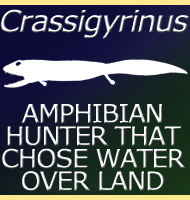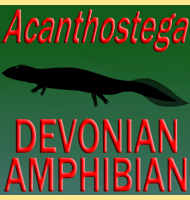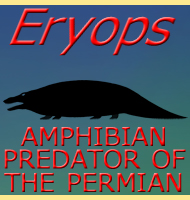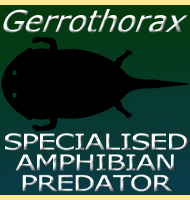


Pholidogaster
Name: Pholidogaster
(Scaly Stomach).
Phonetic: Fol-e-do-gas-ter.
Named By: T.H. Huxley - 1862.
Classification: Chordata, Amphibia,
Labyrinthodontia, Temnospondyli, Colosteidae.
Species: P. pisciformis (type).
Type: Carnivore/piscivore.
Size: 1 meter long.
Known locations: Scotland.
Time period: Vis�an to Serpukhovian of the
Carboniferous.
Fossil representation: 2 fossil remains.
Pholidogaster gets its name from scales that ran along its belly and has an overall morphology that it similar to Greererpeton. The legs are underdeveloped and unsuitable for a terrestrial lifestyle, and the tail is long and flattened for greater efficiency in the water. Pholidogaster also possessed fangs for seizing prey.
Further reading
- On new labyrinthodonts from
the Edinburgh coal-field. - Quarterly Journal of the Geological Society
of London 18:291-296. - T. H. Huxley - 1862.
----------------------------------------------------------------------------
Random favourites
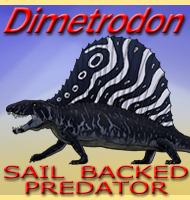 |
 |
 |
